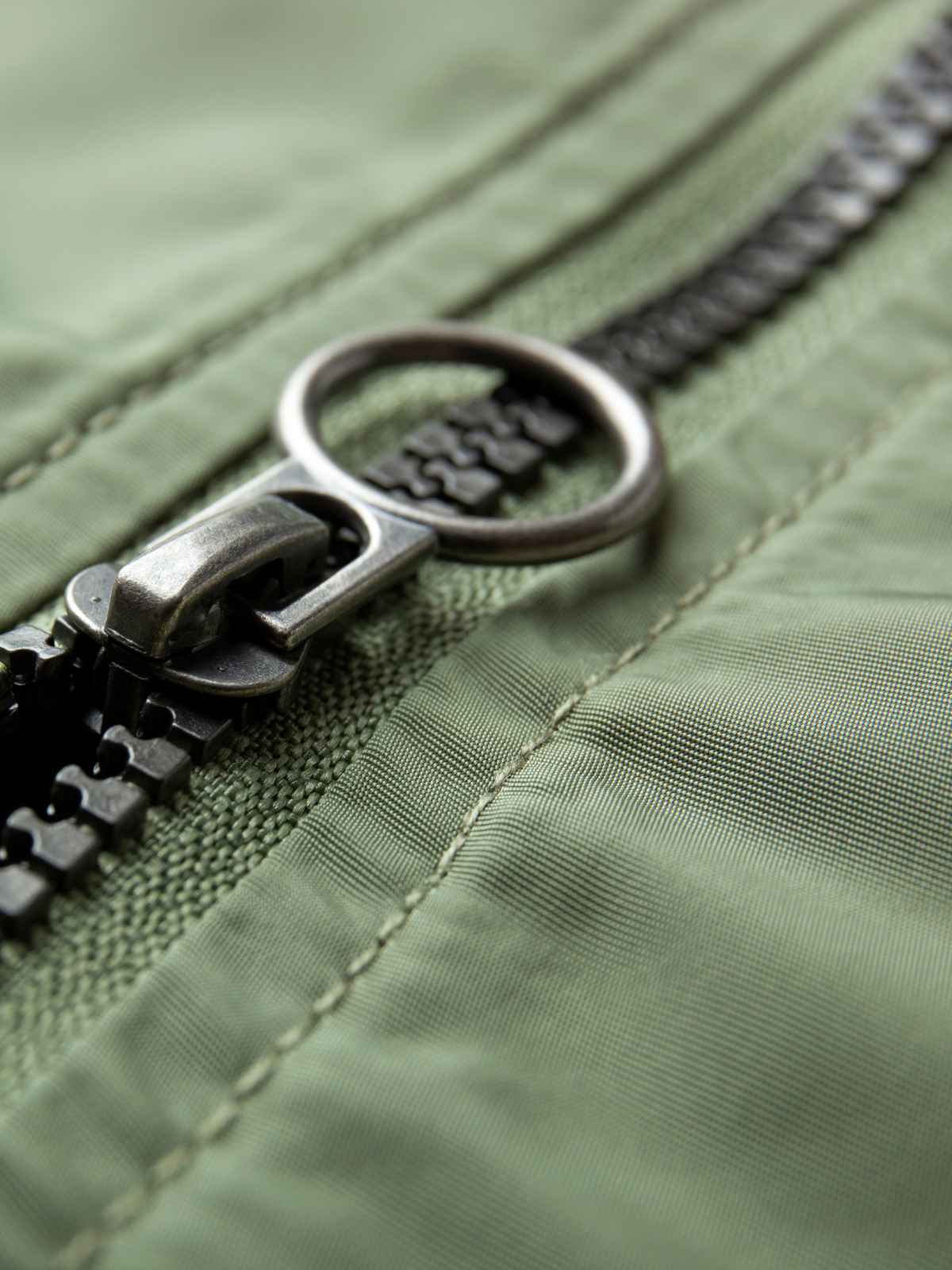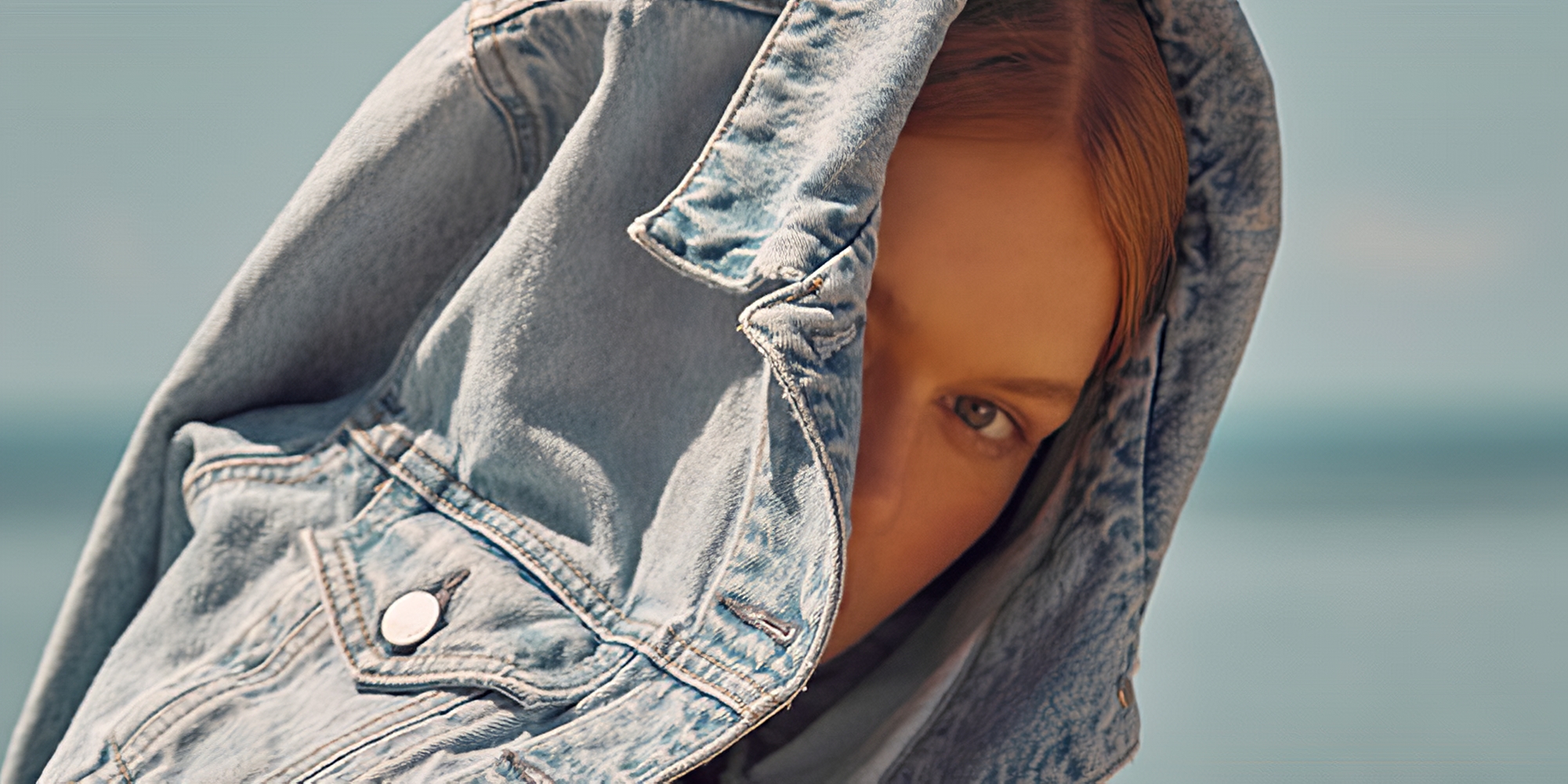In a world where our choices, including our fashion choices, matter more than ever, we’re here to help you navigate the complex world of online shopping and know what to look out for when assessing whether a product matches your values.
Making more informed choices when buying online
Picture this: you’re at home, cosy on your couch, with your laptop on your lap. You’re scrolling through your favourite online fashion store, searching for the perfect item to add to your wardrobe. It’s one click away from being yours.
But then you ask yourself: “How is this garment impacting people, the planet, and animals? Should I buy it?”
It’s not just about fashion—it’s about the bigger picture. In a world of fast fashion and greenwashing, how can you be sure of what’s truly better for the issues you care about?
Understanding what’s on the product page, and beyond, is the key to making better, more informed fashion choices. But before we dive into what to look out for when shopping online, let’s talk about why our choices matter in the first place.
Why our choices matter
Here’s the truth: our buying decisions matter immensely, not just to us but to the entire world. What we buy and who we buy from matter.
This perspective is daunting. But it’s also empowering: each of us holds a formidable tool to turn things around—the ability to choose. By opting for more responsible fashion brands that prioritise better practices, you send a powerful message—one of valuing transparency, fair labour, and environmental responsibility.
By choosing ethically, you become the solution. Wear the change you want to see.
But making the right decisions is difficult when all the required information isn’t available, which is unfortunately very common. Most brands still disclose shockingly little on their product pages. In fact, a 2021 study by the European Union consumer protection authorities found that nearly 50% of claims on e-commerce websites were found to be false, misleading, or potentially illegal.
Sadly, with governments finally taking steps to regulate the fashion industry, some brands are opting to be even less transparent than before, “greenhushing”, for fear of backlash and prosecution. And, of course, some companies are tempted to put a spin on their environmental sins, AKA greenwashing. In a show of “all talk, no action”, some fashion brands spend more time and money on portraying themselves as caring for the planet rather than taking actionable measures to reduce their impact. This makes it more challenging for consumers to discern what’s genuinely good.
So, amidst this complex landscape, it’s normal for you to feel lost. How do you separate the genuine from the disingenuous? How can you tell which brands are truly having a positive impact on people, the planet, and animals?
At Good On You, we’re championing a push for more transparency. Consumers have the right to make the best purchase decisions for themselves, for the planet, and for its inhabitants. Using our comprehensive and trusted ratings methodology, we read between the seams of fashion brands’ reports with the aim of making it easy (as easy as checking a price tag) for anyone to understand how their choices impact the issues they care about.
Sustainability clues in product pages, and beyond
Navigating product pages when shopping online can often be disconcerting. Most product pages lack comprehensive information about a product’s origin and impacts, making it challenging to decide whether it aligns with your values. To solve the puzzle, it’s essential to go beneath the surface. With the right clues, and aided by Good On You’s ratings, you can uncover crucial insights about a product’s impact and make better choices. The tips below will not only highlight what to search for but also emphasise the importance of diving deeper into brand information and checking Good On You’s brand ratings to get a clearer picture of a product’s ethical stance:
Brand information
In reality, it’s not just about what to look for on a product page. When information about the brand isn’t there (or if there isn’t much information at all), you might need to rewind a little bit and start with the basics. Check the brand’s about page, its name and reputation. What do you know about this brand and its mission? Is it a brand known for its commitment to sustainability and ethical practices? If not, dig deeper. Investigate whether the brand has initiated sustainability programs, earned certifications, or taken steps toward more ethical production. You could also take the opposite approach and research whether the brand has been involved in scandals or human rights issues.
We also recommend checking the brand’s Good On You rating on our directory or app. We are the world’s leading source for fashion brand ratings. We’ve done the research and spoken to the experts, the campaigners, and the brands, to come up with robust but easy to use ratings for how each label impacts people, the planet, and animals. We score brands on hundreds of issues and then give an overall rating from “We Avoid” and “Not Good Enough”, through “It’s a Start”, to “Good” and “Great”. Brands with higher Good On You ratings (“Good” or “Great”) are more likely to align with your values and support more sustainable fashion choices—provided they truly meet your needs.
Product description
Once you know more about the brand in general, pay closer attention to the product you’re interested in. The devil is in the details. Even if the brand’s doing a good job in general, this product may not meet your values or needs. Often, brands will include a short text or product description to give shoppers more information about the fit, style, or feel of the garment, and sometimes about the materials used (more on that below) or where the product was made. Read this description with a discerning eye. Ask yourself: does it provide a comprehensive account of how it was made, where, and by whom?
Materials
According to the Sustainable Fashion Forum, approximately 80% of a garment’s environmental footprint is determined at the raw material level. Choosing items made from more responsible materials is important. Your best bets are lower-impact materials such as recycled cotton, recycled wool, organic hemp, or organic linen. You might also want to check whether the brand uses animal-derived materials. On the flip side, be cautious of environmentally harmful materials like conventional cotton or virgin polyester. We’d also recommend being wary of brands that don’t provide clear information about the materials they use. Again, you have the right to know about what the clothes you’re buying are made from.
Production location
Responsible manufacturing practices are one of the cornerstones of sustainability, but it’s crucial to delve beyond surface-level information. While many brands disclose the country of production, the “made in … ” label often leaves much unsaid.
First, because the journey of a piece of clothing is complex and lengthy. It’s extremely rare for raw materials to be grown, processed, sewn, and sold all in one location. “One of your garments today, that you’re wearing, could have travelled through five different countries, and up to 20 different processes along the way,” said Amy Powney, founder of “Good” brand Mother of Pearl, in a recent TED Talk. So that “made in … ” information might just be referring to the final stage of production.
In order to truly assess a garment’s ethical production, look for additional information regarding labour conditions, wages, and factory standards. Brands that prioritise fair labour practices will often provide a more comprehensive view of their production process, showcasing transparency that speaks to their commitment to fairness.
If such details are scarce on the product page, don’t be disheartened. Our Good On You directory is a valuable resource for investigating a brand’s practices, even when the product page falls short. Our ratings dive deep into brand’s practices and will often flag the sustainability of brands business models, their product durability, their commitment to circularity, and their textile waste practices, whether or not they have policies and practices on child labour, forced labour, worker safety, freedom of association (ie the right to join a union), gender equality, diversity, and of course, payment of a living wage.
Choosing local can be a good option, provided the local brand is transparent about its sourcing and production practices. But again, while smaller, local, and transparent brands will tend to be more sustainable, remember that the fashion supply chain is extremely complex and that no item can truly be 100% local. This means that regardless of where we buy, the item has likely already travelled around the world in some form, and had a considerable impact on the environment up to that point in its journey.
Certifications and labels
When assessing a product, certifications can be insightful, but it’s essential to be discerning. Look for respected certifications such as Fairtrade, GOTS (Global Organic Textile Standard), or OEKO-TEX Standard 100, as these often indicate higher standards. However, be aware that not all certifications hold the same weight, and some brands might over-promote a few certifications while disclosing little else. It’s important to dig deeper and look at a brand’s transparency and commitment to sustainability beyond certifications.
We also reference some certifications, accreditations, standards, initiatives, and guidelines when rating brands. It’s important to remember that even reputable certifications are only one sign that a brand is taking meaningful action—and no one certification or standard is perfect. In recent years, for example, organic cotton certifications have come under scrutiny—scrutiny that’s ultimately a good thing in ensuring standards remain robust. In other words, reputable certifications are a good sign. Checking Good On You’s directory when shopping is a helpful shortcut, as our methodology weights certifications accordingly and then factors that into the overall brand rating.
Pricing
Here’s the thing: you can learn about a garment by looking at its price. There is so much more that goes into a price tag than the cost of the fabrics, and less responsible brands (especially fast fashion brands) will often cut corners and put workers’ lives in danger to offer the pitiful prices we sometimes see today (looking at you, £1 bikini). As journalist Lucy Siegle said, in the True Cost documentary, “Fast fashion isn’t free. Someone, somewhere, is paying.”
This is partly why price transparency is becoming more common. It involves a detailed breakdown of the product’s cost components, such as production, materials, labour, marketing, and overhead. Transparency in pricing builds trust and ensures fair compensation for workers in the supply chain.
Remember, too, to take cost-per-wear into account when evaluating the up front investment in a garment. Higher quality clothes may cost more up front, but they are designed to last for much longer than cheap fast fashion from the likes of SHEIN.
Sizing and fit
Selecting the right size might seem obvious, but in a world where sizing varies widely between brands, it’s often a complex challenge. This isn’t just about comfort—it’s about sustainability. Selecting the correct size minimises returns, which can be environmentally detrimental. In fact, in the US alone, “5bn pounds of returned goods end up in landfill each year, creating 15n tonnes of carbon emissions,” reports Dazed.
Look for sizing guides and fit descriptions to make an informed decision, and get out your measuring tape to match. Customer reviews can also be a good way to gain insights into the quality and fit of the product.
There are also innovative solutions like sizing startups employing AI and virtual try-on tools to enhance the accuracy of your choices. Additionally, some brands, like “Great” label Unspun, are championing customisable and made-to-order options for a better fit. And let’s not forget the power of professional measurements and tailoring, surprisingly cost-effective ways to ensure a perfect fit—especially when you opt for second hand items.
Shipping and packaging
Sustainability goes beyond the garment itself. According to some studies, “packaging is the dominant generator of plastic waste, responsible for almost half of the global total.” That’s an enormous (and growing) amount of often non-recyclable waste. Research the brand’s shipping methods and packaging materials. More sustainable brands often use lower-impact packaging. A growing number of companies also encourage customers to reuse packaging and offer easily reusable alternatives to traditional packaging.
In our ratings, we look at the components of the packaging, such as whether it is made from recycled materials, and the steps the brand has taken to minimise the use of packaging in the first place as well as the elimination of plastic packaging.
What if the product doesn’t fit the bill?
After all this analysis, you may well discover that a brand isn’t clearly disclosing its practices, that the product you’re interested in isn’t aligned with your values, or that the brand is rated “It’s a Start” or below on Good On You.
In such cases, don’t be disheartened. One option if you’re really into that particular product is to look for second hand alternatives. It’s very common to find new items or products from current collections on platforms like Vinted, Poshmark, Depop, and others. Buying second hand not only reduces the demand for new production but also offers existing garments a fresh lease on life. This approach is not only more sustainable but often more budget-friendly.
Some forward-thinking brands will even embrace the circular economy by providing second hand options alongside their new collections, promoting sustainability throughout their product offerings.
Post-purchase recommendations
Extending the life of our garments is the most sustainable thing we can do. Review care instructions carefully and make sure you’ll be able to care for the item for as long as possible. Check if the brand provides guidance on how to dispose of the garment responsibly. Better, check whether it offers repair options to contribute to a circular fashion economy.
By paying attention to all these factors, you can make better, more informed choices. And with every choice, you become a more conscious consumer, supporting brands that align with your values and pushing the whole industry to become more sustainable and fair.



















